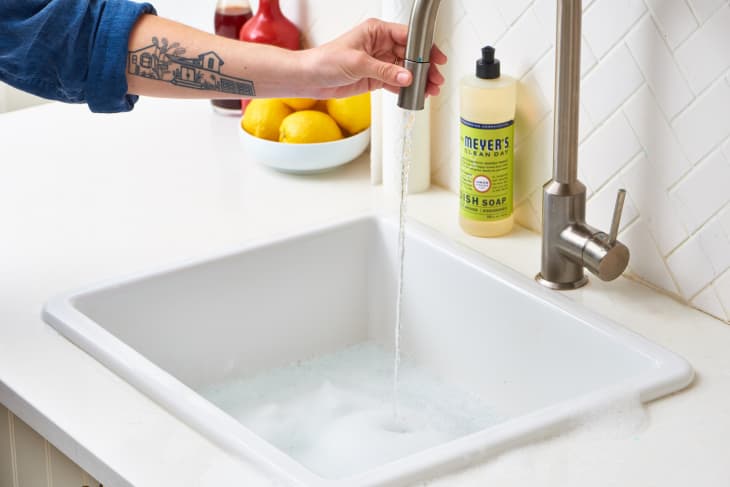7 Easy Ways to Save and Reuse Water at Home, Starting With Your Cooking Water

Many people take water for granted. You turn a tap and it comes flowing out, either into your sink or your bathtub. But it’s easy to waste this water, and this is a major problem. While 71 percent of the earth is covered in water, there is a small and finite well of fresh water, which has remained fairly constant over time and has to nourish a swiftly growing population of more than seven billion people. As can be imagined, many lack access to this essential resource.
According to a report by the American Association for the Advancement of Science, about four billion people, representing nearly two-thirds of the global population, experience severe water scarcity at least one month of the year. Factors like climate change, geography, engineering, and resources all contribute to a region’s access to fresh water. For instance, 12 of the 17 most water-stressed countries in the world are in the Middle East and North Africa. Even still, water scarcity impacts communities globally, including the United States. In 2019, the World Resources Institute found that New Mexico’s extremely high water stress levels rivaled those of severely water-stressed countries, and a 2019 report by DigDeep found that Indigenous peoples in the U.S. are 19 times more likely to lack access to safe water than their white counterparts. The problem is only growing: Scientists warn that in as little as 50 years, many regions in the U.S. could see their freshwater supply reduce by as much as a third.
The good news: There are countless ways to conserve water. Teams of scientists, hydrologists, foresters, wildlife managers, farmers and city planners are already working together to increase agricultural efficiency and invest in green infrastructure that reduces wastewater. But a crisis this vast also requires the help of everyday people. By making small lifestyle changes to reduce water usage, you can help minimize the effects of droughts and water shortages in big ways. Here are some practices you can adopt to easily reuse water at home.
Reuse your pasta, veggie, or aquarium water to irrigate plants
Water is a useful kitchen tool, and recipe ingredient. You wash fruits and vegetables with it, and you boil pasta with it. Instead of throwing this leftover water down the drain, reuse it. While you might not drink or even clean dishes with this water, you can run it over house plants or outdoor gardens. The same is true for aquarium water. Sure, old fish tank water might be harmful to your sea friends, but it can be collected for agricultural reuse. In fact, aquarium water contains materials like nitrogen, phosphorus, potassium and ammonium, which can act as a natural fertilizer for lawn gardens.
Note: Avoid reusing water from saltwater aquariums, as it can actually harm plants.
Reuse water from old bottles and glasses
It can be easy to leave half-drunk water bottles in cars or dashing out of your homes before finishing a glass of water. Instead of dumping this perfectly usable water in your sink when you find them, reuse it to wash dishes, clean furniture, or to water plants.
Put excess ice in your pet’s bowl
I make smoothies every morning, and my ice maker always drops more cubes than I need for the perfect fruit shake. Sound familiar? Rather than just tossing the ice, use it. Consider scattering it over your lawn or, if you’re a pet parent, add it to your furry friend’s water bowl.
Place a bucket in your shower
Showertime typically leads to gallons of water waste, but it doesn’t have to. Instead, this can be an opportunity to collect water to be used later. As you wait for your water to warm up, place a bucket under the stream. When you’re ready to hop in, move the tub out of the way (but perhaps in an area that might still garner sprinkles from the showerhead). When you’re all done, consider how you can best reuse this water. Some ideas: Use it to wash a car, clean some shoes, flush the toilet, or water plants.
Install a sink-to-toilet water system
With some plumbing, you can install different circular systems that reuse water and save you money on utility bills. One option is the sink-to-toilet water system, where greywater (water that has been used for washing purposes) flows from the sink to the toilet every time you flush. If you like the concept but don’t currently have the ability to install this system at home, you can instead purchase a toilet tank sink. Instead of reconfiguring your plumbing, this is essentially a two-in-one apparatus that reuses greywater through a sink that sits atop a toilet.
Install a greywater collection system
Like the sink-to-toilet water system, you can install a greywater system to take water that has already been used in the bath, sink or laundry and reuse it to irrigate your lawn, rather than having it stream down into the sewer.
Recycle pool water
If you’re a pool owner, you know these natatoriums of fun can waste a lot of water while draining and refilling. But there is another solution: reusing this water over and over. If you’re able to, consider purifying your pool water through reverse osmosis. A similar process to purify drinking water, reverse osmosis, administered by professionals, lowers the impurities in pool water to a safe level so you’re able to continue reusing it.